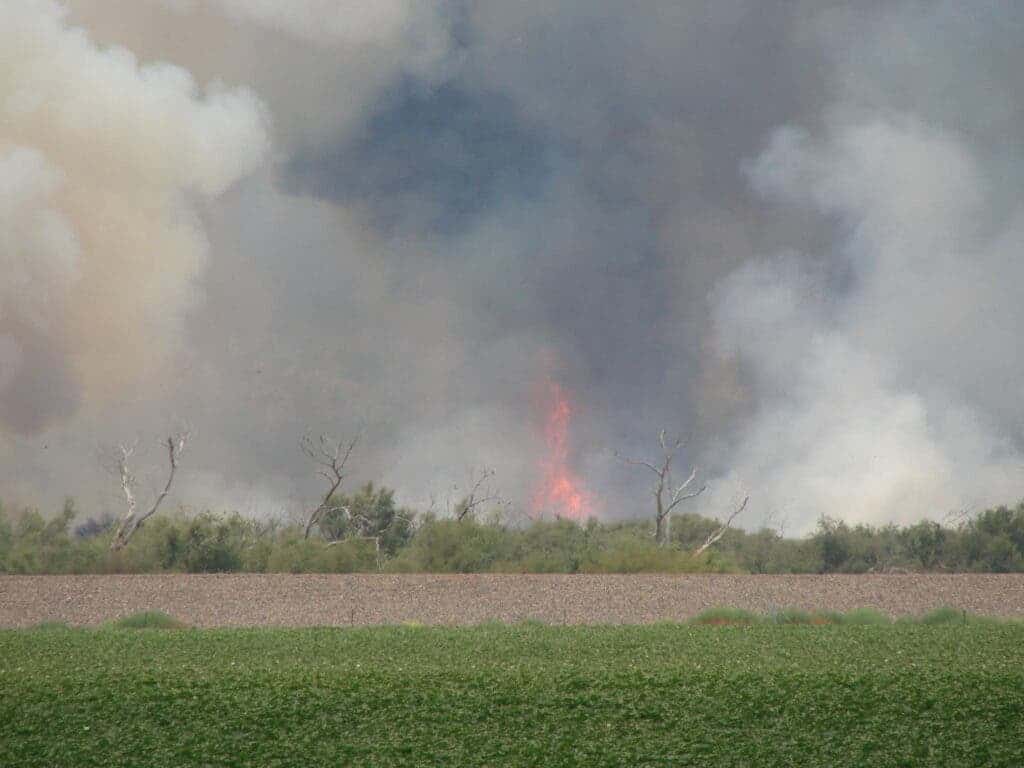If you feel like you are seeing more news of wildfires around the world, you’re not wrong. From the Amazon basin to Australia, the issue is getting more severe, affecting people’s livelihoods and biodiversity. Now, a new report by the UN is warning this could just be the start, anticipating extreme wildfire events will increase by 14% by 2030 and 30% by 2050.

Scientists from the UN Environment Program (UNEP) said it’s time for everyone to “learn to live with fire” and adapt to the growing frequency and severity of wildfires, which will challenge lives and economies around the world. Even if we reduce greenhouse emissions much faster, the near-term consequences are still locked in.
The report finds an elevated risk for regions previously unaffected by wildfires, such as the Arctic. This is in line with previous studies that have warned we are entering into the worst wildfire period in recorded history. Last year, a study found that the world’s eight most severe wildfires on record happened in the last decade.
“Uncontrollable and devastating wildfires are becoming an expected part of the seasonal calendars in many parts of the world,” Andrew Sullivan, an Australian researcher and the editor of the report, said in a press conference. “Where wildfires have historically occurred, they may increase; however, where wildfires have not historically occurred, they may become more common.”
Growing wildfires
Fires have always had a vital ecological purpose on Earth, important for many ecosystems as they restore the soil’s nutrients, help germinate plants, and remove decaying matter. Without some wildfires, overgrown foliage such as grasses can dominate the landscape and lead to worse fires, especially during heat waves and severe droughts.
That’s why burning parts on land deliberately has prevented more destructive fires. Indigenous communities have been doing this for thousands of years. But as humans have warmed the planet, neglected forest management and developed more land, wildfires have become more destructive and deadly, according to the new UN report.
Wildfires are made worse by climate change through low humidity, strong winds and increased drought. At the same time, climate change is made worse by wildfires, which target carbon-rich ecosystems such as rainforests and peatlands. This transforms the landscapes into tinderboxes, making it more difficult to stop the rising temperatures.
While it’s a global phenomenon, the world’s poorest nations are especially affected by wildfires, the UN said. People’s health is directly affected by inhaling smoke, with increased health effects on the most vulnerable. The economic costs of rebuilding wildfire-affected areas can sometimes go beyond the means of low-income countries.
Wildfires also target wildlife and its natural habitat, pushing some species closer to extinction. A recent example is the Australian bushfires from 2019 and 2020. A report by WWF found that almost three billion animals, including mammals, reptiles, birds, and frogs, were killed or displaced by the fires, much higher than an earlier estimate.
Compiled by 50 researchers, the report calls for governments to re-think the way they address wildfires, allocating more funding for prevention rather than using most of the resources for direct responses. Now less than 1% of the funding is assigned to prevention. Data and science-based monitoring should be used much more extensively.
“Current government responses to wildfires are often putting money in the wrong place. Those emergency service workers and firefighters on the frontlines who are risking their lives to fight forest wildfires need to be supported”, Inger Andersen, UNEP head, said in a statement. “We have to minimize the risk of extreme wildfires.”









